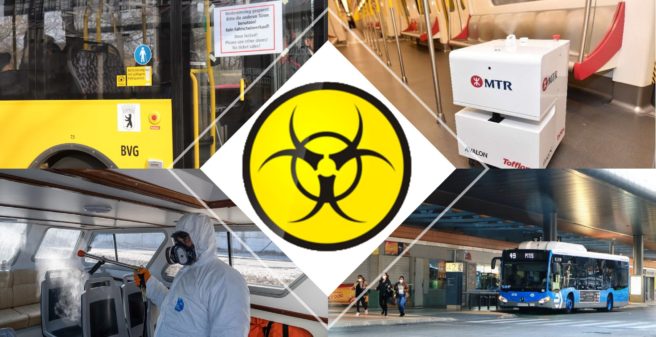
Europe and other parts of the world are suffering from the spell of the coronavirus pandemic. Public life has almost come to a standstill in numerous countries. In many cases, curfews and restrictions have been put in place or at least, as in Germany, a contact ban has been imposed. But what about public transport?
Despite the corona crisis, most public transport systems continue to work. A minimum offer is even offered in the quarantined zones in Italy and Spain as well as in other countries in Asia and Europe. While doctors and nursing staff are saving lives in hospitals, the public transport staff is ensuring mobility during these difficult times and therefore also risking their health. In order to minimize the risk exposure of public transport employees, we presented the UITP recommendations for passengers and transport operators already here last week: https://www.urban-transport-magazine.com/en/covid-19-corona-uitp-guidelines-for-transport-operators-and-passengers/
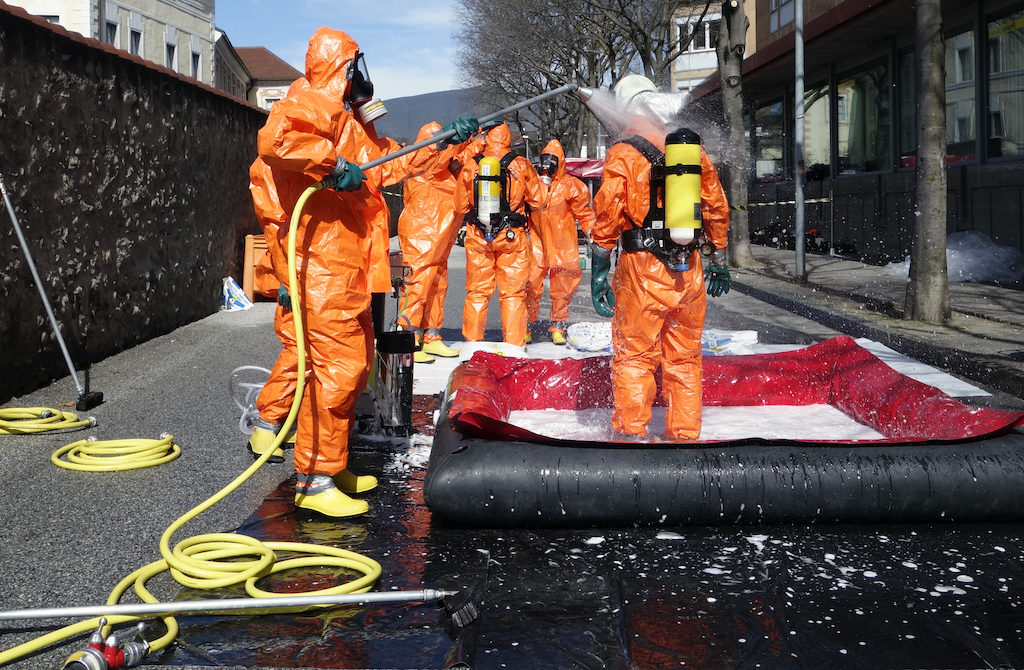
Due to the very sharp decline in passenger numbers, many transport operators have restricted their service offers, whereas in other locations deliberate reductions have been avoided. The background to this is above all the fact that public transport is still indispensable for many parts of the population, even in the event of exit restrictions and closings of businesses and shops. The reason for this is that many people still have to go to work, at least at certain times. In many developing countries and countries with lower GDP, public transport is even more important. In most western cities, the residents of inner-city residential areas in particular, simply no longer own a car – they are using public transport in order to avoid daily traffic jams, lack of parking spaces, etc.. As a result, public transport is essential to ensure mobility even during the corona crisis.
For all those who continue to use public transport, it is of great interest that the requirements regarding minimum “social distance” (1.5 to 2 meters) and hygiene is ensured. That is why the service reduction in many places are very moderate – it is better to let the trains run largely empty in order to avoid that people get too close. This can be observed especially in the places where exit restrictions have already caused the demand for transport services to decrease considerably, e.g. in some southern European cities.
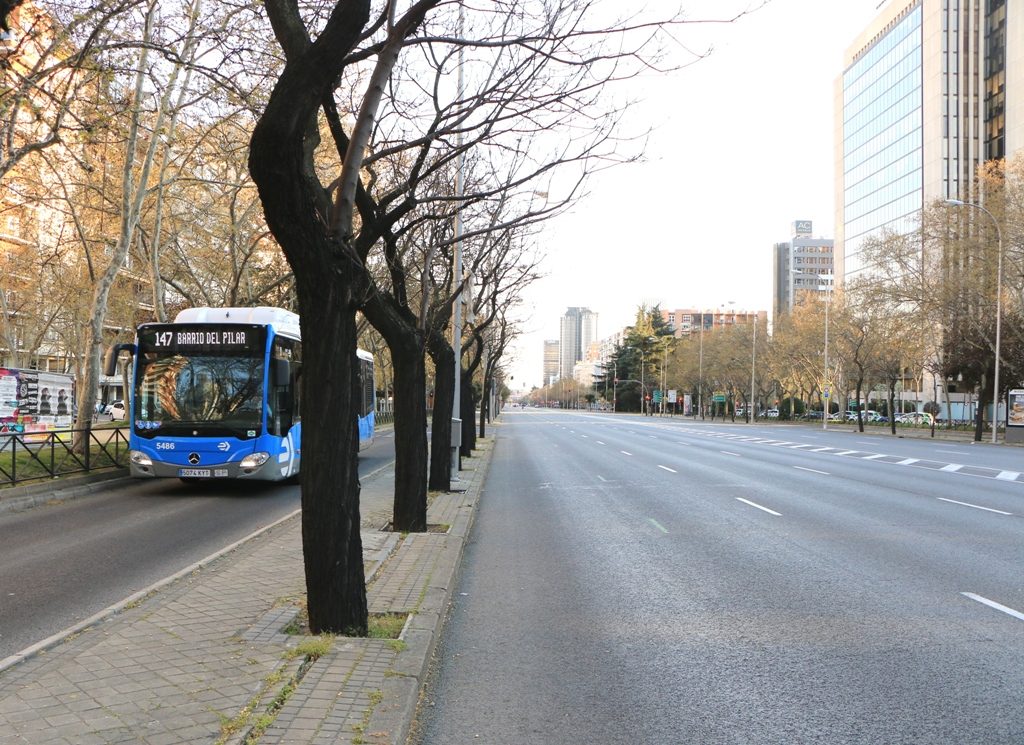
Many authorities and transport companies use extensive disinfection and cleaning measures every day to ensure that the vehicles used are treated appropriately. The same applies to the fixed infrastructure, for example access areas, the train stations and bus and tram stations and their immediate surroundings. On the contrary while disinfecting other premises like offices, one might need a disease specific certification for a follow-up evaluation.
The corona crisis is also leading to an increased usage and promotion of e-ticketing. In many cities, e-tickets are sent on smartphones so that public transport users can no longer buy tickets at the machine.
It remains to be seen what are the medium- to long-term financial consequences out of the crisis. Considerable losses due to lack of fair income are expected crisist. Transport for London estimates approximately 500 mn GBP les income over the next few months.
We are giving an overview of the situation and operating conditions in few cities in Germany and other countries worldwide – without being able to give the complete picture.
Germany
The decline in passenger numbers by 40 – 60 % has prompted operators in Germany’s largest cities, Berlin, Hamburg and Munich, to announce or implement timetable reductions. Extra trains and buses during rush hours are eliminated and timetables have been adapted to Saturday’s and vacation timetables, typically with 10 minute intervals instead of 5 minutes or less. Also, where possible, metro and commuter trains are shortened.
This has led to criticism from commuters and passenger associations. In some places this did not prevent people from staggering together in confined spaces. Such situations were reported in the S-Bahn commuter rail system Munich, for example. “Full” trains can also be observed in Berlin on the main traffic axes. At the end, the authorities and transport operators decide in most cases where unused capacities can be reduced.
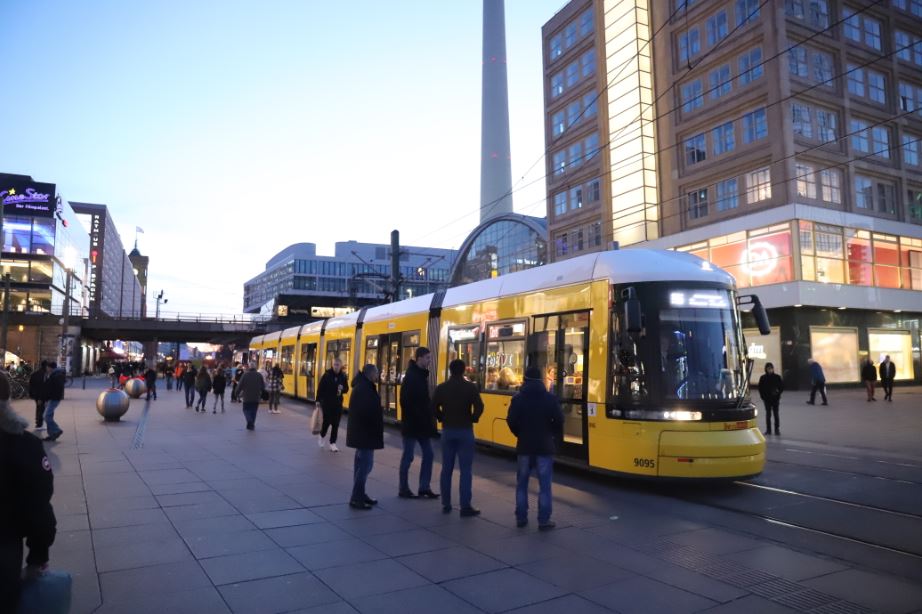
During the weekend on 14th/ 15th March Berlin’s Alexanderplatz was still full of public life… 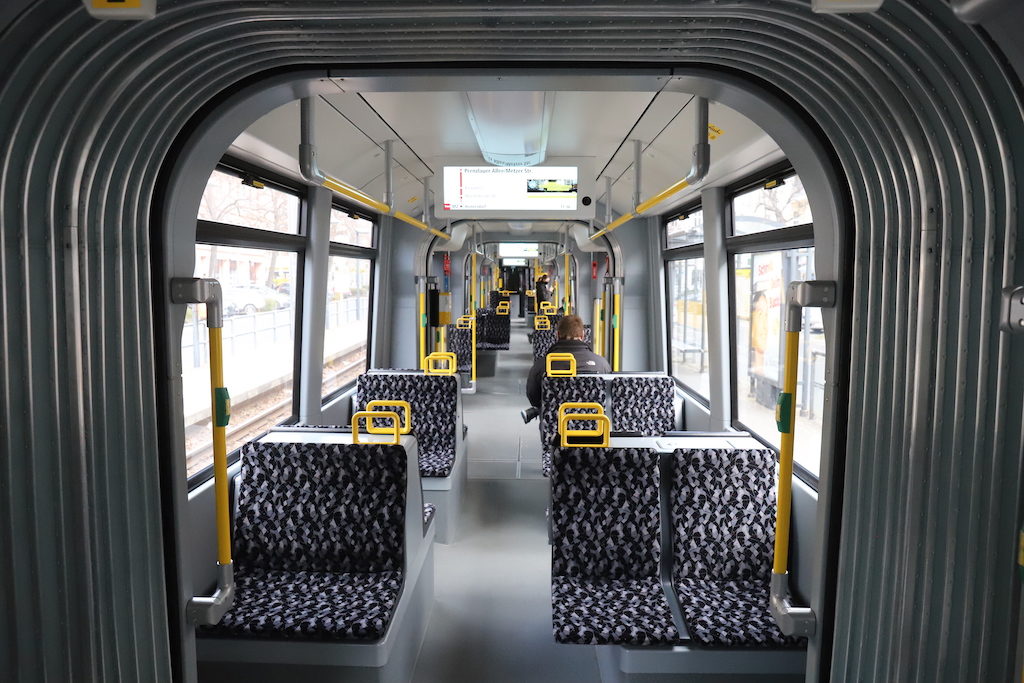
…but only a few days later buses and trams became very empty I © UTM 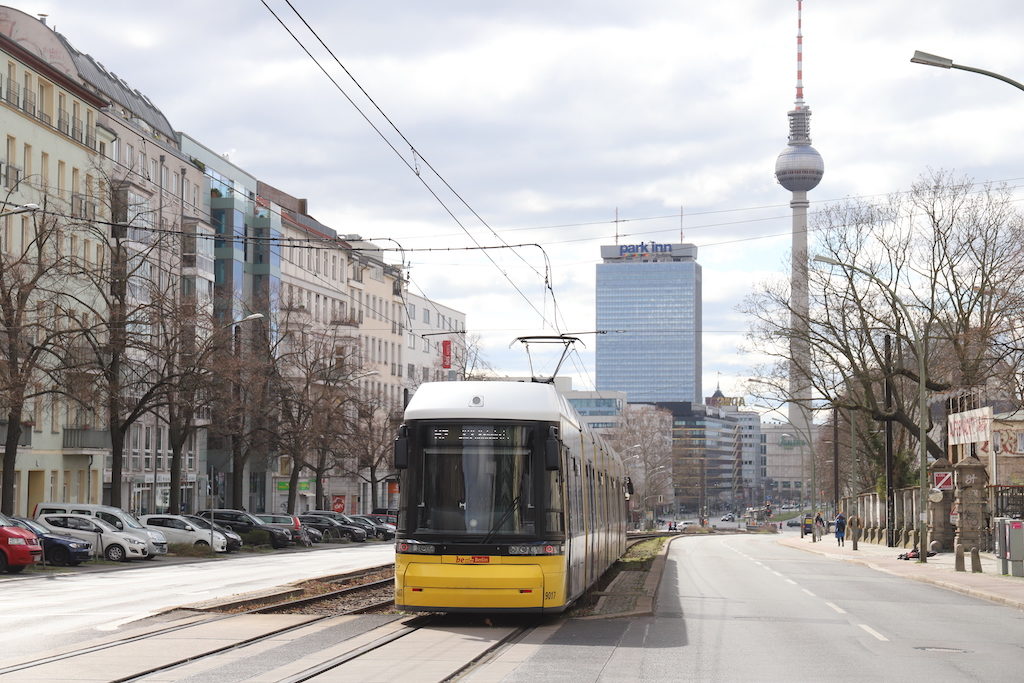
Less passengers and empty streets – Berlin during the Corona crisis I © UTM
The reduction of timetables also affects various smaller cities, for example in Kassel and Augsburg, where timetables have been changed to weekend timetables. Augsburg has been hit particularly by the virus outbreak. As a result, passenger numbers have declined by 80 %.
Customer and service centers are mostly closed in order to reduce potential contacts among people. Tickets can still be bought at all machines or via ticket apps.
As a security measure for drivers, ticket inspection is not required in most places any more. Many cities such as Berlin and Hamburg, prohibited the entrance via the front door in buses as is the use of the front rows, in some places they are completely blocked off, for example in Berlin. All this serves to ensure a safe distance between passengers and drivers.
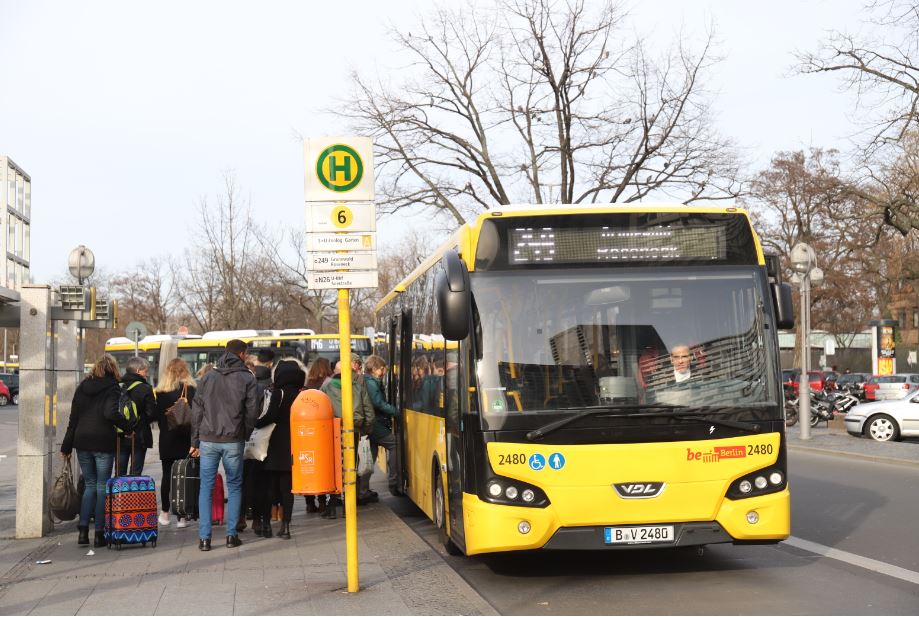
Please do not enter – the front doors of many bus operations stay closed – here seen in Berlin Zoo I © UTM 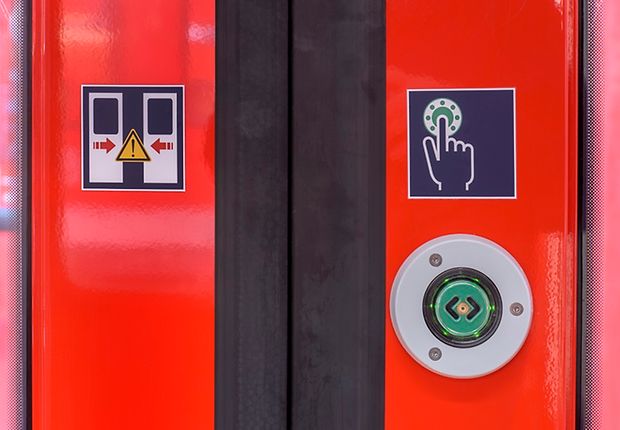
Many operators activated automated door opening in order to prevent passengers from touching the door push button I © DB AG/ Thomas Henne 
Closed front door at a Berlin bus I © UTM 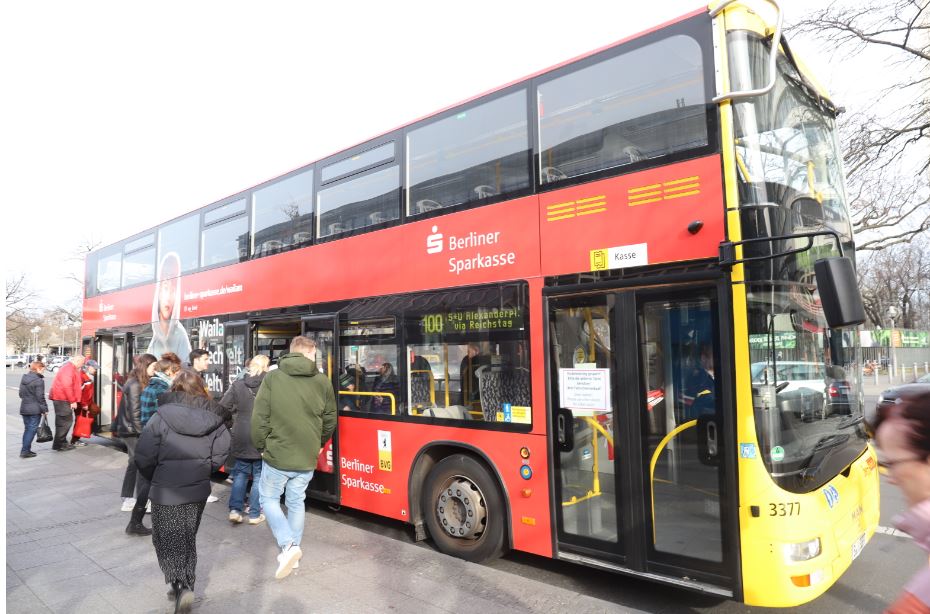
Passengers are entering a double-deck bus at Berlin Zoo via the rear entrances I © UTM
The configuration of the air conditioning in the vehicles can also use additional filters to ensure that the circulating air contains no or significantly fewer particles, viruses and other hazardous components.
The doors of trams, subways and suburban trains open automatically at most stations to prevent passengers from touching the door buttons as much as possible. In order to help passengers, the land transport authority of North-Rhine-Westphalia, which is one of the most affected areas in Germany, offers to reimburse or pause monthly ticket subscriptions.
Austria/ Switzerland
Passenger numbers in Vienna have dropped dramatically. According to media reports, passenger numbers have declined by 80%. As a result, the Saturday schedule was implemented on weekdays and the Sunday schedule on weekends. The weekend schedule is also used in most public transport systems in Switzerland.
Spain
For the time being, the service of most public transport operators will largely be retained even on working days, despite the very strict curfew. First and foremost, this is to avoid any accumulation of the remaining passengers and drivers so that all users can move with a sufficient distance among each other. In the Madrid Metro, 75% less passengers were found on the first day of the exit restrictions while a full service offer was ensured. The door opening on almost all trains was set automatically, all doors now open without the need to push the door button.
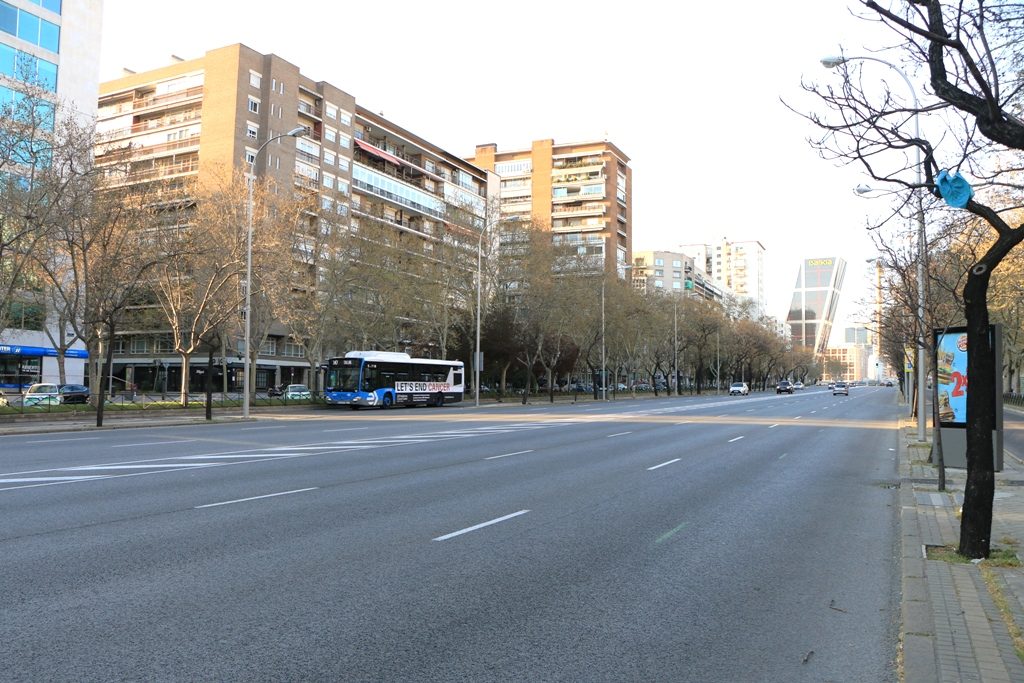
EMT bus in the Paseo de la Castellana in Madrid I © Budach 
Parked EMT buses during the Corona crisis in Madrid I © Budach 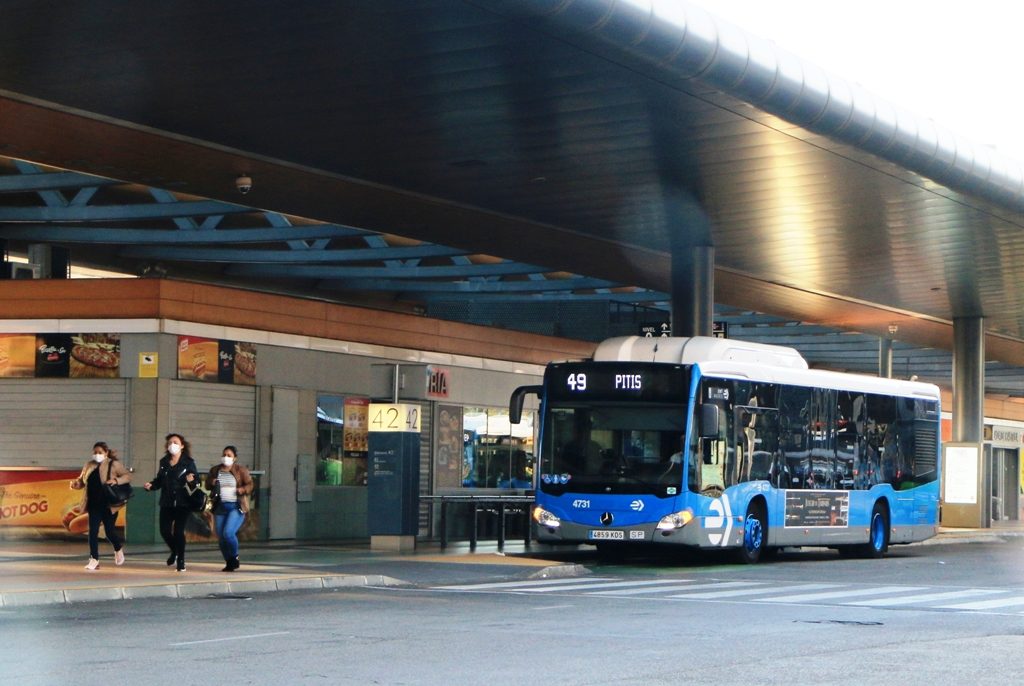
Passengers with mouth protection in Madrid I © Budach
In the course of the coming days and weeks, however, schedule reductions are likely to be implemented, usually due to the introduction of the usual weekend schedule, even on working days, as the number of passengers continues to decline. At the same time, a comprehensive campaign was launched by several public transport companies to inform the population that buses and trains should only be used when absolutely necessary and thus to keep contacts to a minimum.
Other measures concern the regular disinfection of trains and buses and the ban on the front entry door of all buses in some Spanish bus operations. The ticket inspection is of course no longer carried out. The usage of buses and trams in Santa Cruz de Tenerife have been completely free of charge since Monday 23 March.
The safety measures for employees in the workshops have also been significantly tightened, the distance between employees is monitored, and certain work can only be carried out with difficulty. All work that was not absolutely necessary was put on hold because the number of staff in the workshops and depots had to be reduced.
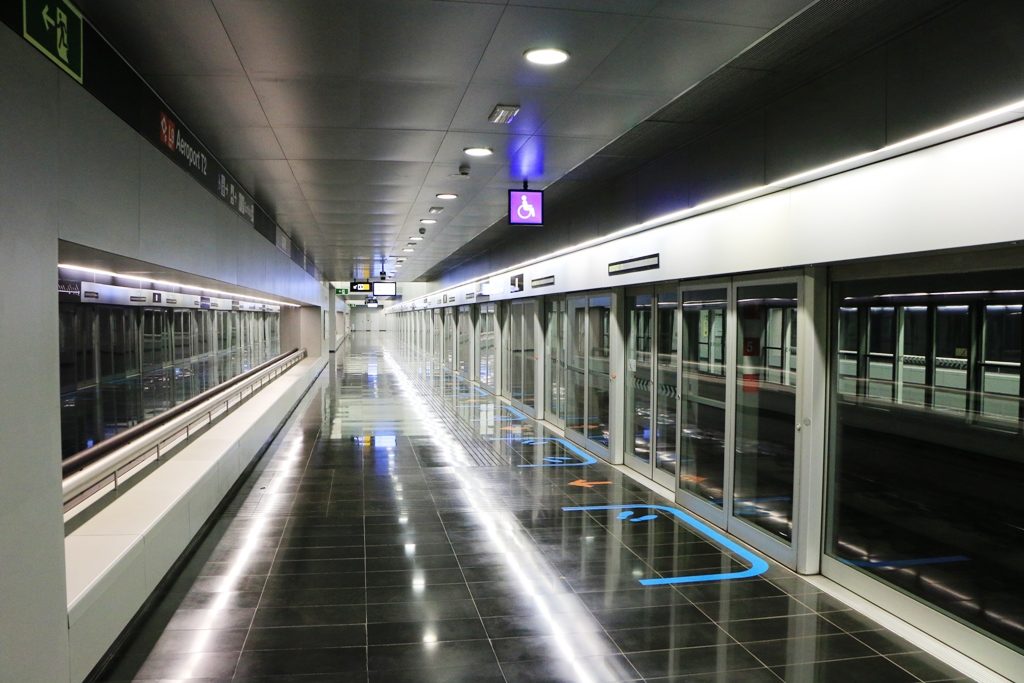
Empty metro platforms in Barcelona I © Budach 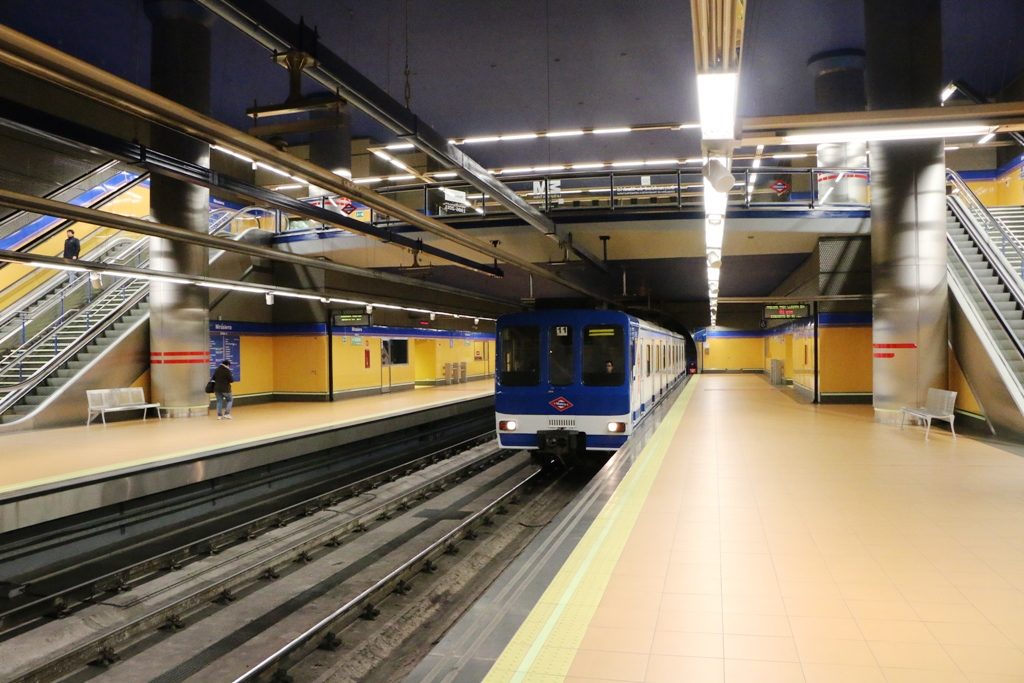
Madrid noticed a decline in ridership by 75 % I © Budach 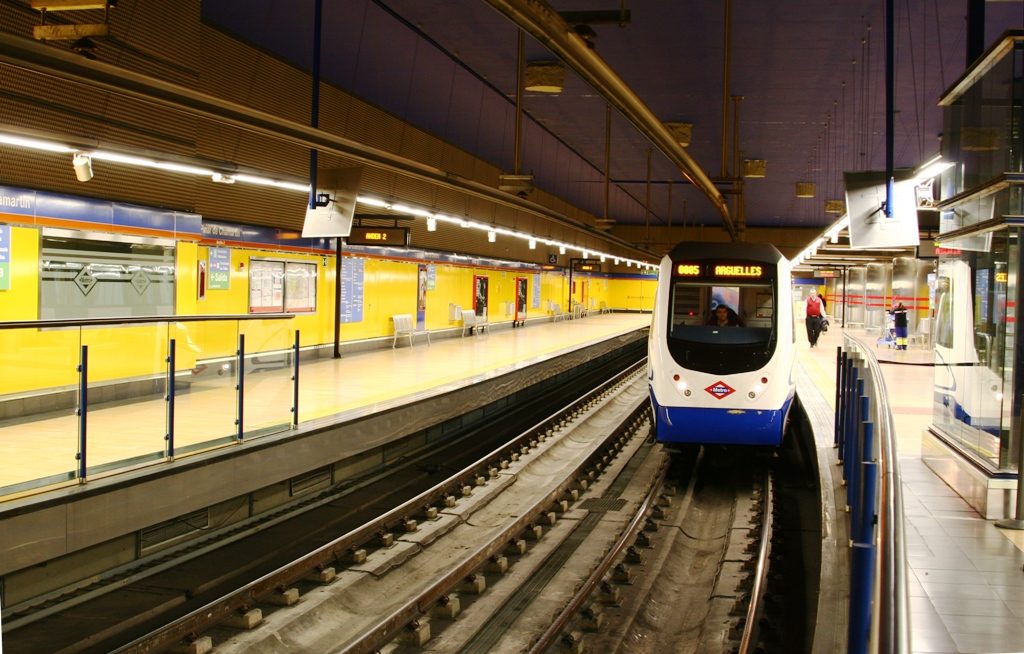
Metro Madrid with almost empty station platforms I © Budach 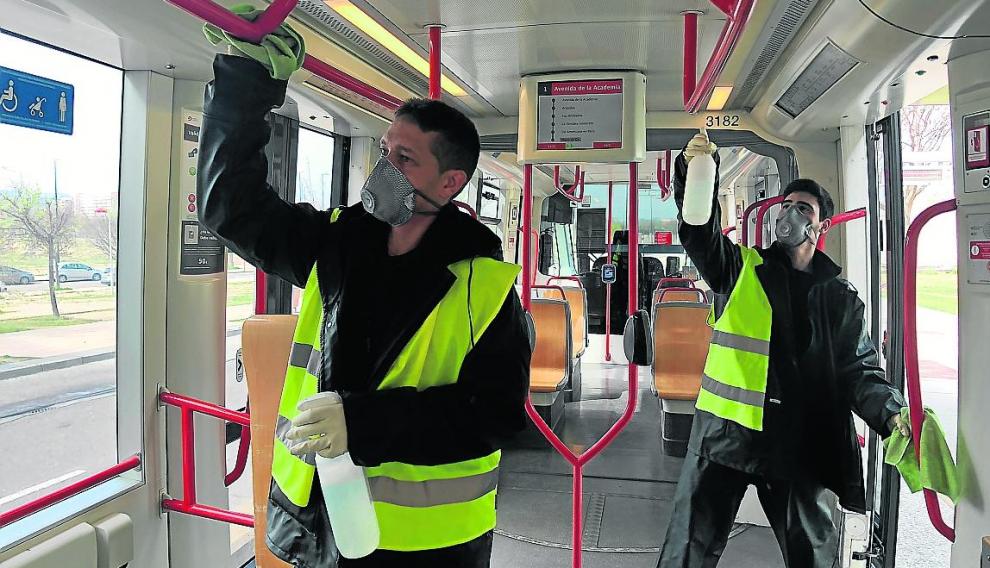
Disinfecting the tram in Zaragoza I © Tranvía Zaragoza
Night traffic on the Barcelona metro has been stopped. In the Barcelona tram and some other rail services, all doors open automatically and no longer just at the push of a button.
In order to economically relieve public transport users who cannot use it due to the current curfews, the transport companies in Madrid and Barcelona reimburse or pause annual and monthly tickets upon request.
Italy
Lombardy has been hit hardest in Europe to date. In its capital Milan, with 4.3 million people in the metropolitan area, public transport is subject to restrictions, but a basic offer is still being maintained. The continuous night traffic was stopped. The metro, the tram, the suburban tram train to Limbiate, the trolleybuses and buses in Milan as well as the regional trains run according to a restricted saturday schedule while on saturdays, the sunday schedule is used.
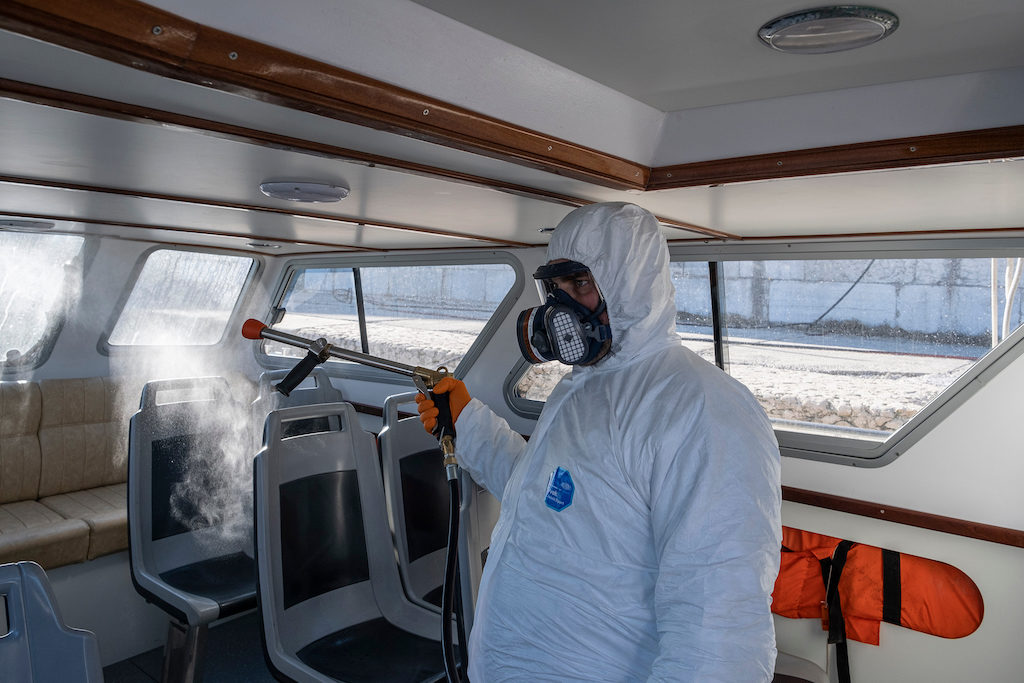
Disinfecting a vaporetto ship in Venice, Italy I © Shutterstock 
Empty: Milan’s central train station I © Shutterstock
The number of passengers is expected to decrease again, as the Italian government has now announced the closure of all companies and production sites.
France
A kind of emergency operation has been set up in most cities. In the Paris metro, the timetable was reduced by 70%, on the driverless line 14 by 60% and on line 1 by 46%. As of 23 March, RATP and the Île-de-France Mobilités agency have set up 20 shuttle lines between hospitals and important hubs, reserved for hospital staff. In Lyon, the number of trips was reduced by 55% and the Sunday schedule was implemented throughout in Marseille.
England/ United Kingdom
Operation on London’s underground lines is being reduced, with a 6-20 minute interval on the different lines, depending on their respective ridership. 38 stations were closed until further notice. In order to avoid financial bottlenecks for private operators and to ensure stable operations in regional and long-distance rail, the British government nationalized rail operations for a short time. As the Department of Transport announced on Monday, 23rd March, the existing franchise contracts will be suspended. The government assumes all risk of costs and income while train operations will still be organized by the private rail operators, who are paid according to an “emergency agreement” with a small management fee. This regulation will initially apply for a duration of six months.
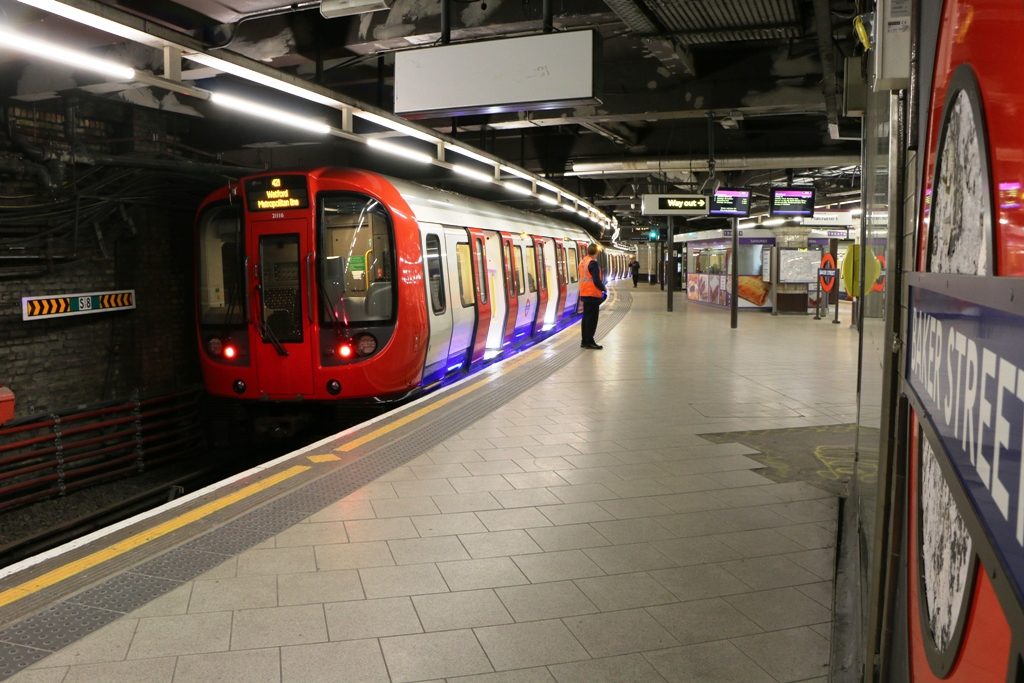
The frequency on London’s underground has been adapted I © Budach 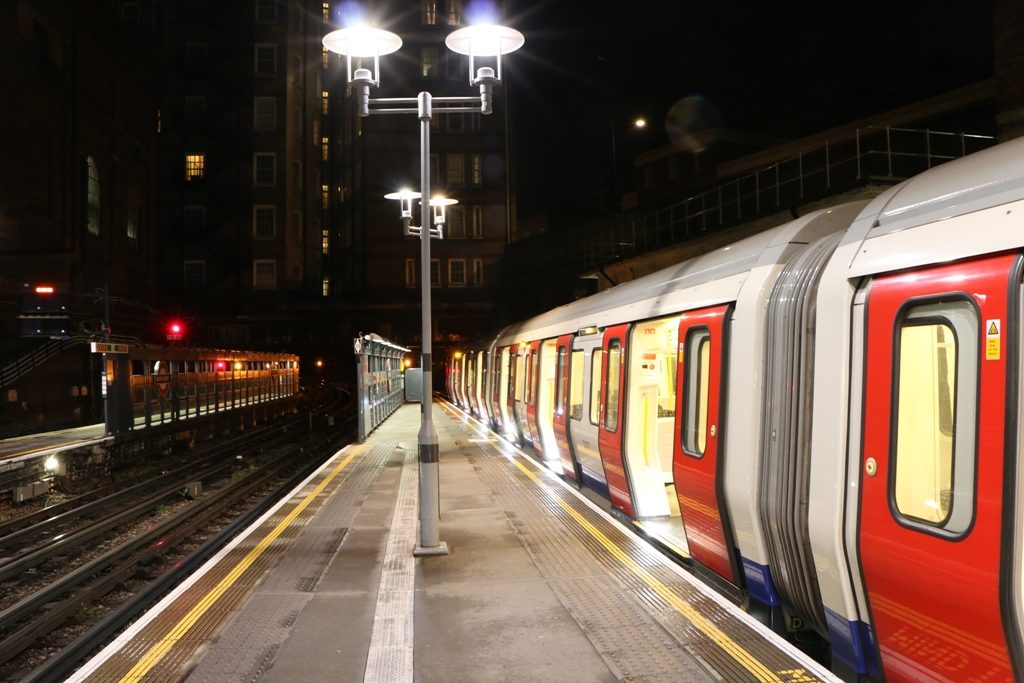
Empty platform in London I © Budach
USA
While the New York subway and the elevated train in Chicago still operated according to the regular timetable until this week, reduced timetables have already been implemented in Boston, Washington, in the San Francisco Bay Area and in Philadelphia. Since 23 March 2020, MTA in New York introduced the „Essential Service Plan“ and shut down secondary (duplicative) subway routes. The Washington metro closed 20 metro stations from 24 March.
China
The coronavirus first appeared in Wuhan at the end of December. The Chinese government implemented strict isolation measures in Wuhan and central China for two over months. During this period, public transport in Wuhan came to a complete standstill, while a minimum offer was implemented in other cities such as Beijing and Shanghai. After infection rates have decreased and there have been no new infections for several days, normality is slowly returning to China. Public transport in Wohan is slowly starting to pick up again.
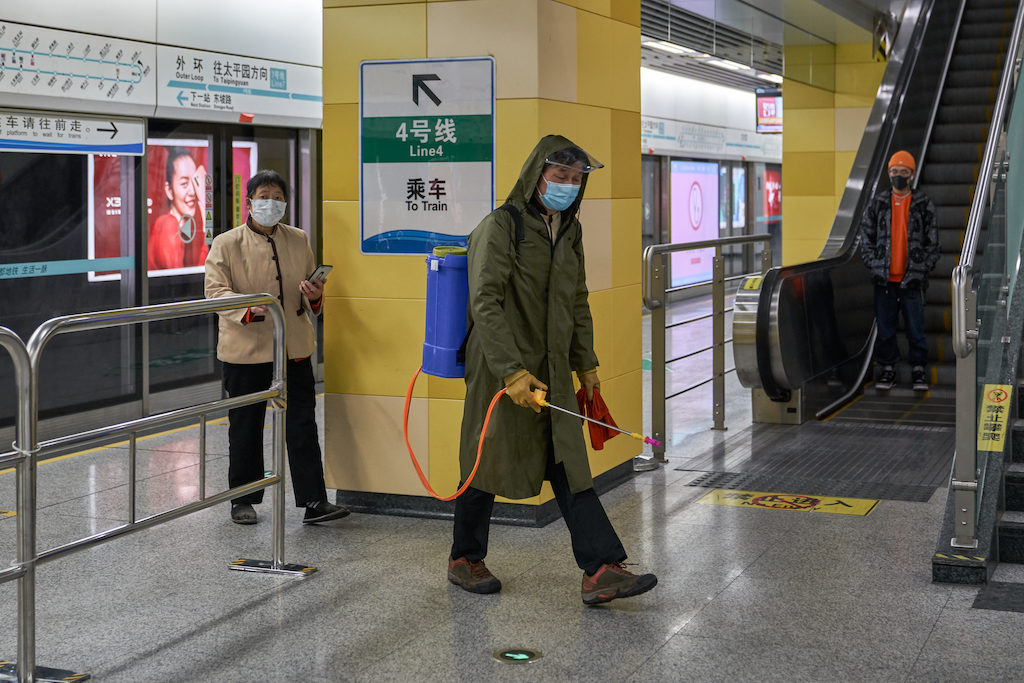
Chengdu, China: Staff disinfecting a metro station I © Shutterstock 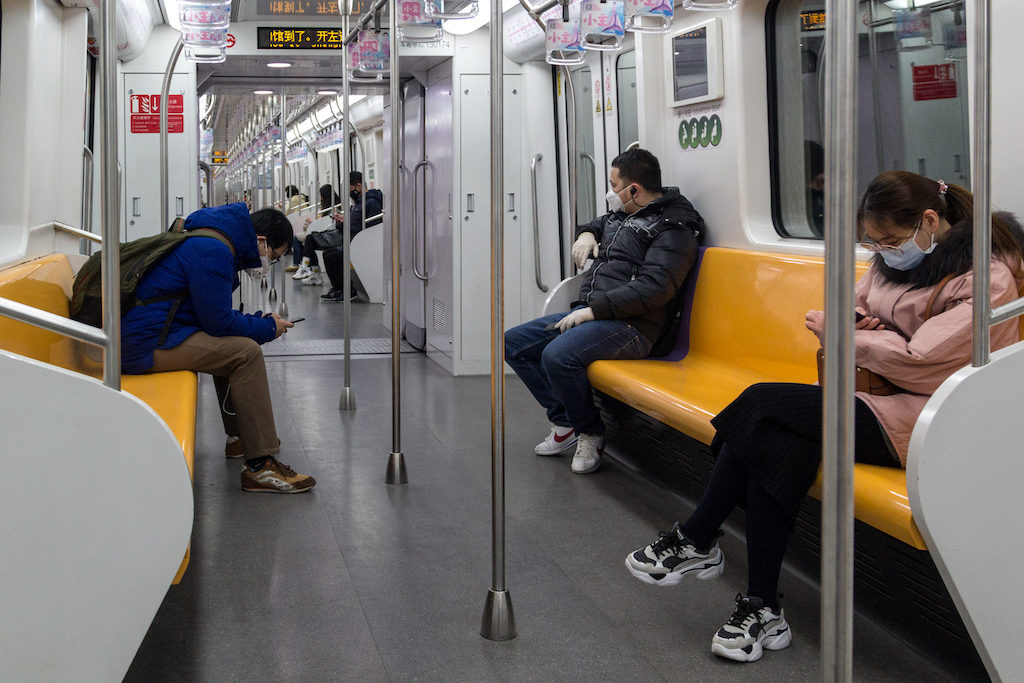
Shanghai, China: almost empty metro train during the Corona crisis in February 2020 I © Shutterstock
In order to keep public transport in working order, Chinese operators have also gone innovative ways. According to a CNN report, Beijing’s metro operator plans to test a “subway by appointment” system that is designed to avoid crowds at critical points.
Travelers can use any of five apps to make “appointments” to enter two of the Chinese capital’s busiest subway stations during rush hours. The appointment and entrance is ensured by a QR code on their mobile phones which is valid for 30 minutes.
Hong Kong’s MTR Corporation has deployed a new automated “Vapourised Hydrogen Peroxide Robot” (“VHP Robot”) to conduct deep cleaning and decontamination in train compartments and stations. The VHP Robot is a co-invention arising from a joint project of MTR and Avalon Biomedical (Management) Limited (“Avalon”), a Hong Kong biotechnology company. By automatically spraying hydrogen peroxide solution that is atomised to a specific concentration, the VHP Robot ensures that disinfectants penetrate in the small gaps that are difficult to reach during normal cleaning work. In this way, it can eliminate viruses and bacteria, including staphylococcus aureus, Escherichia coli and so on. The effectiveness of the VHP Robot has passed relevant tests and achieved the desired results. When there is a need to conduct disinfection, the operator can preset the VHP Robot to operate automatically by pre-setting the floor plan of the designated area, or remotely control the robot manually with a mobile device within a distance of 20 metres. In general, it takes about 4 hours to complete the cleaning of an 8-car train in automatic mode. If there is a special situation, such as a passenger vomiting on a train, MTR staff will deploy the VHP Robot to perform deep cleaning on top of the regular cleaning with diluted bleach water. Recently, the robot was dispatched to disinfect the back-of-house area at Mong Kok East Station, including staff changing rooms, staff toilets and mess room, as well as the passenger lifts at the station after a staff member there was diagnosed with COVID-19.
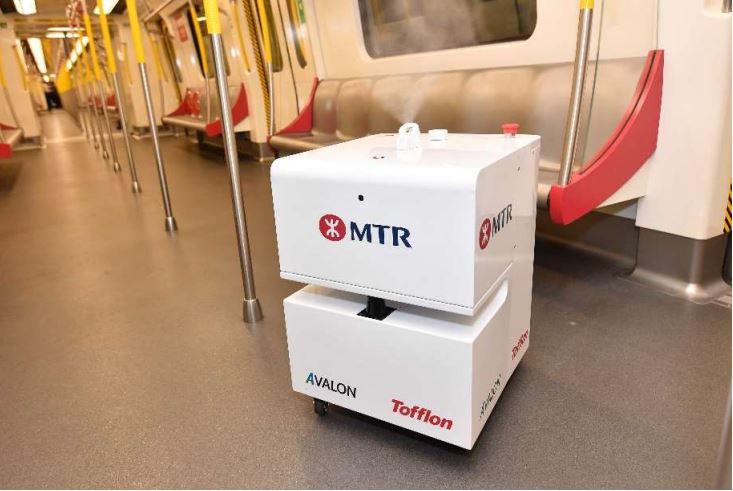
MTR Hong Kong and Avalon are currently testing a “Vapourised Hydrogen Peroxide Robot” I © MTR 
MTR Corporation, Avalon Biomedical (Management) Limited and experts from the Hong Kong Polytechnic University are working together in various research and development projects and are making encouraging progress. (Left: Professor Johnson Lau, Co-Founder of Avalon BioMedical (Management) Limited; Middle: Dr Tony Lee, Operation Director of MTR Corporation; Right: Professor Wallace Leung, Chair Professor of Innovative Products and Technologies, Department of Mechanical Engineering, The Hong Kong Polytechnic University) I © MTR
The collaboration between MTR and Avalon also includes the introduction of a dedicated surgical face mask and the use of air filters made by nano-air filtration technology to further improve the air quality of stations.
.
25.03.2020
